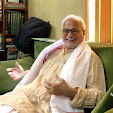September 19th, 2007 (posted by Edward Berge) Open Integral
The title of the above is a book written by Gar Alperovitz, a University of Maryland political economist and president of the National Center for Economic and Security Alternatives. This is an extension of an earlier thread here called “Emerging economic structures.” I think it’s a vital project to explore, promote and develop a political-economic expression of an evolving consciousness. The following is from a review of the above book in dollars & sense: The Magazine of Economic Justice
The schematic model outlined here is termed a “Pluralist Commonwealth”—”pluralist” to emphasize the priority given to democratic diversity and individual liberty; “commonwealth” to underscore the centrality of new public and quasi-public wealth-holding institutions.
At the heart of this model is a robust vision of community democracy as the necessary foundation for a renewal of democracy in general. The model prioritizes a variety of strategies to undergird local economies, thereby creating conditions favorable to the growth of local civil society associations and an increase in the power of local government to make meaningful decisions.
The model also projects the development over time of new ownership institutions, including locally anchored worker-owned and other community-benefiting firms, on the one hand, and various national wealth-holding bodies, on the other. These ultimately take the place of current elite and corporate ownership of the preponderance of large-scale capital.
At the national level, a major new institution—call it a “Public Trust”—is projected to oversee the investment of stock on behalf of the public as state and other pension boards commonly do today. The proceeds could flow to individuals, to states, to municipalities, to the federal treasury—or perhaps to fund such basic public services as education or medical care for the elderly.
A fundamental shift in the ownership of wealth over time slowly moves the nation toward greater equality: directly, for instance, through worker-owned enterprises, and also indirectly, through a flow of funds from the large-scale public investments. (Capital would likely be assembled both by the taxation of elite income and wealth and through new loan guarantee strategies to finance the broadened public ownership of new investments.) Over time, these flows of funds are allocated to finance a reduction in the work week so as to permit more free time, which in turn bolsters both individual liberty and democratic participation. In addition, ownership structures and strategies that stabilize the local economy strengthen the traditional entrepreneurial foundations of liberty while also enhancing individual job security.
Finally, the emerging model implicitly moves in the direction of, and ultimately projects, a radical long-term devolution of the national political system to some form of regional reorganization and decentralization. The region is the most logical locus for economic planning aimed at securing jobs in particular communities and for handling ecological, transportation, and other issues in a rational and democratic fashion. This entry was posted on Wednesday, September 19th, 2007 at 7:31 am and is filed under Politics, Economy. 5 Responses to “America Beyond Capitalism: What a “Pluralist Commonwealth” Would Look Like”

No comments:
Post a Comment